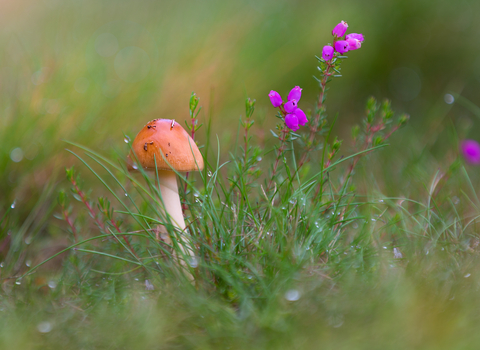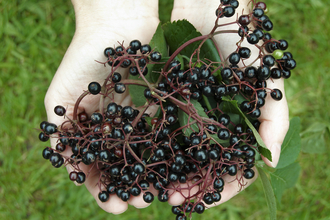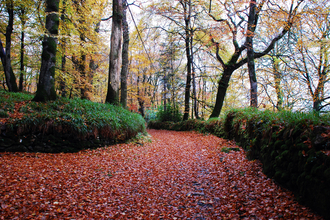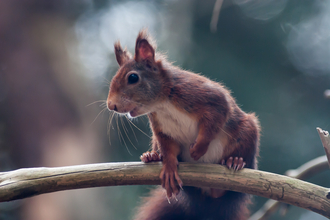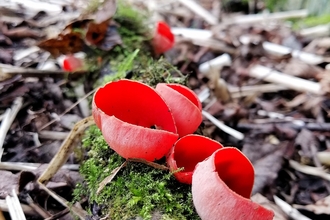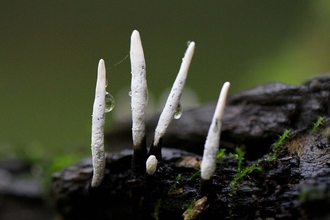Mushrooms and toadstools
With more than 15,000 species in the UK, fungi make up an entire kingdom of their own. These curious beings are neither plant, nor animal, and their diversity is stupendous. Chicken of the woods and King Alfred’s cakes, pink ballerinas and scarlet elf cups, blewits and boletes; some are delighfully named, some delicious, and others poisonous. Every habitat is home to a great variety of fungi, and autumn is the best time to explore this little-visited world: you may well be surprised at just how many you come across!
Explore the magical kingdom of mushrooms and toadstools
Find fungi near you
Slimy but beautiful, colourful waxcap fungi adorn grasslands each autumn at Burfa Bog near Presteigne, Powys. Around 20 species of this group of fungi have been recorded here, making it one of the most important places in Europe for this fascinating group of organisms.
- Antrim, Slievenacloy
- Avon, Dolebury Warren
- Avon, Goblin Combe
- Avon, Walton Common
- Devon, Halsdon
- Essex, Belfairs Nature Discovery Park
- Essex, Thrift Wood nature reserve
- Essex, Pound Wood nature reserve
- North Wales, Eithinog
- North Wales, Aberduna
- North Wales, Coed cilygroeslwyd
- Powys, Pwll y Wrach
- Powys, Dolforwyn Woods
- Suffolk, Knettishall Heath
- Surrey, Sheepleas
- Warwickshire, Brandon Marsh, Oakley Wood, Ryton Wood
- Wiltshire, Green Lane Woodland Complex
- Wiltshire, Clouts Wood
- Wiltshire, Ravensroost Wood
- Yorkshire, Grass Wood
- Yorkshire, Potteric Carr
- Yorkshire, Brockadale Nature Reserve
Remember to follow signs and stick to paths when exploring nature reserves.
How to do it
As well as many delicious wild mushrooms, fungi also include some of our most poisonous species, aptly named species such as the sickener, poison pie, death cap and the destroying angel. NEVER eat any fungi you find unless you are 100% certain about their identity. Unless you are with an expert, it is best to leave mushrooms where you find them - that way, others can enjoy their beauty - and go home with a photo instead.
Many local Wildlife Trusts run ‘fungal foray’ events during the year. Visit their websites to find out about local events.
If you can't get to these places
Fungi grow in every habitat, and you certainly don’t need to go to a nature reserve to find your first toadstools: there will more than likely be several species in your garden. Encourage fungi to grow by leaving logs and branches to rot and wait to see what arrives. You’ll end up helping beetles too!
More wildlife experiences
From seeing colourful wildflowers to spotting magnificent birds of prey, we can help you get closer to wildlife across the UK.

